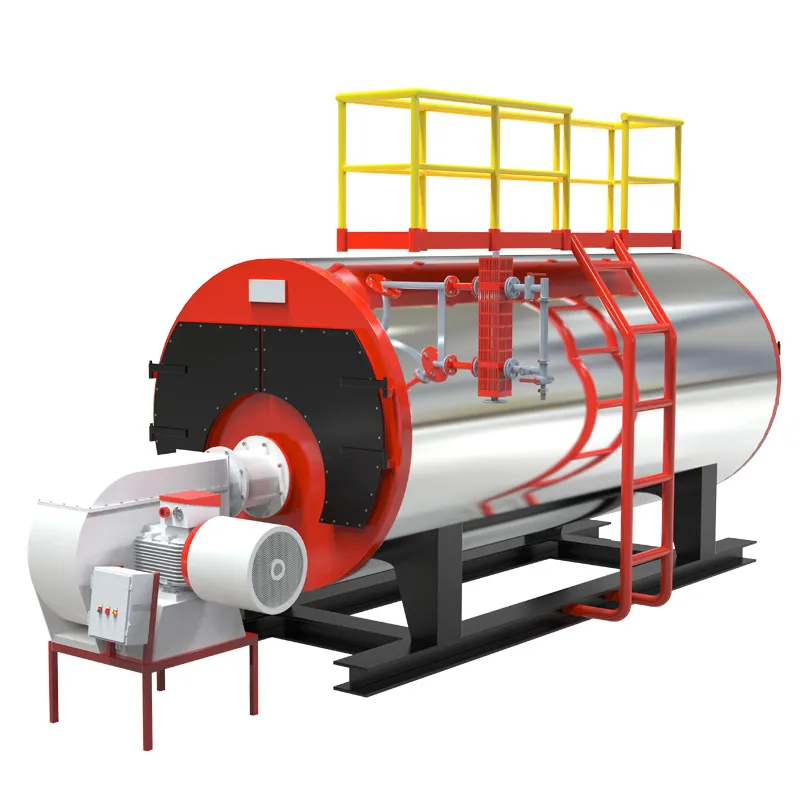
Jan . 22, 2025 05:29 Back to list
Biomass fired steam boiler
Harnessing the Benefits of Low Pressure Steam Systems for Optimal Performance
An optimal low pressure steam system isn't simply about selecting the right equipment; it involves meticulous calibration and continuous monitoring. Expertise shines through in the ability to fine-tune these systems, adapting to the slightest variations in pressure to maintain peak performance. Implementing programmable logic controllers (PLCs) and sensors to provide real-time data feedback enables operators to make informed decisions, ensuring that the system is running efficiently and economically. Anderson & Co., a leading figure in steam system maintenance, exemplifies the authoritative approach to low pressure steam management. Their methodical maintenance schedules, combined with cutting-edge technology integration, sets a benchmark in the industry for reliability and efficiency. Trust in such systems is built over time, driven by a commitment to regular inspections and proactive adjustments. Lessons from Real-World Experience Examining case studies further elucidates the potential of low pressure steam systems. Consider the success of Portland Mills, a paper manufacturer that transitioned to a low pressure steam system. Their experience highlights the transformative impact of such systems; by recalibrating their steam flow and implementing sophisticated monitoring, they reported a 20% reduction in energy costs while achieving a 15% increase in throughput. The comparative simplicity and safety of low pressure steam also reduced their insurance costs, demonstrating its attractiveness from a fiscal and operational standpoint. In another instance, a pharmaceutical company revamped its production line by integrating low pressure steam controls, meticulously tailored to accommodate seasonal variations in ambient temperature and humidity. This strategic adaptation not only enhanced their production consistency but also resulted in compliance with stringent regulatory standards for medicinal products, which speaks volumes about the trustworthiness and reliability of such systems when expertly managed. Conclusion Low pressure steam systems, when expertly navigated, present an array of operational advantages that can redefine efficiency metrics within industries that demand precise thermal management. By fostering a culture of continuous education and smart integration of technology, companies can achieve an authoritative stance in their respective fields, characterized by enhanced performance metrics, cost savings, and superior product quality. Whether you are refining an existing system or considering a new implementation, the importance of experienced oversight and robust technology cannot be overstated. Trust in these practices, as substantiated by both empirical data and esteemed authorities in the field, assures that embracing low pressure steam is not only an operational decision but a strategic advancement towards sustainable industry leadership.


An optimal low pressure steam system isn't simply about selecting the right equipment; it involves meticulous calibration and continuous monitoring. Expertise shines through in the ability to fine-tune these systems, adapting to the slightest variations in pressure to maintain peak performance. Implementing programmable logic controllers (PLCs) and sensors to provide real-time data feedback enables operators to make informed decisions, ensuring that the system is running efficiently and economically. Anderson & Co., a leading figure in steam system maintenance, exemplifies the authoritative approach to low pressure steam management. Their methodical maintenance schedules, combined with cutting-edge technology integration, sets a benchmark in the industry for reliability and efficiency. Trust in such systems is built over time, driven by a commitment to regular inspections and proactive adjustments. Lessons from Real-World Experience Examining case studies further elucidates the potential of low pressure steam systems. Consider the success of Portland Mills, a paper manufacturer that transitioned to a low pressure steam system. Their experience highlights the transformative impact of such systems; by recalibrating their steam flow and implementing sophisticated monitoring, they reported a 20% reduction in energy costs while achieving a 15% increase in throughput. The comparative simplicity and safety of low pressure steam also reduced their insurance costs, demonstrating its attractiveness from a fiscal and operational standpoint. In another instance, a pharmaceutical company revamped its production line by integrating low pressure steam controls, meticulously tailored to accommodate seasonal variations in ambient temperature and humidity. This strategic adaptation not only enhanced their production consistency but also resulted in compliance with stringent regulatory standards for medicinal products, which speaks volumes about the trustworthiness and reliability of such systems when expertly managed. Conclusion Low pressure steam systems, when expertly navigated, present an array of operational advantages that can redefine efficiency metrics within industries that demand precise thermal management. By fostering a culture of continuous education and smart integration of technology, companies can achieve an authoritative stance in their respective fields, characterized by enhanced performance metrics, cost savings, and superior product quality. Whether you are refining an existing system or considering a new implementation, the importance of experienced oversight and robust technology cannot be overstated. Trust in these practices, as substantiated by both empirical data and esteemed authorities in the field, assures that embracing low pressure steam is not only an operational decision but a strategic advancement towards sustainable industry leadership.
Share
Latest News
-
Oil Fired Hot Water Boilers Sale - High Efficiency & Affordable
NewsJul.31,2025
-
High-Efficiency Commercial Oil Fired Steam Boiler for Industry
NewsJul.30,2025
-
High-Efficiency Biomass Fired Thermal Oil Boiler Solutions
NewsJul.30,2025
-
High Efficiency Gas Fired Thermal Oil Boiler for Industrial Heating
NewsJul.29,2025
-
High-Efficiency Gas Fired Hot Water Boiler for Sale – Reliable & Affordable
NewsJul.29,2025
-
High Efficiency Biomass Fired Hot Water Boiler for Industrial and Commercial Use
NewsJul.29,2025
Related PRODUCTS
Copyright © 2025 HEBEI HONGZE BOILER MANUFACTURING CO., LTD. All Rights Reserved. Sitemap | Privacy Policy






















